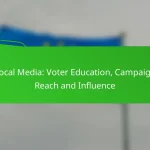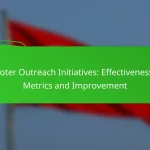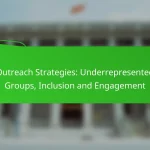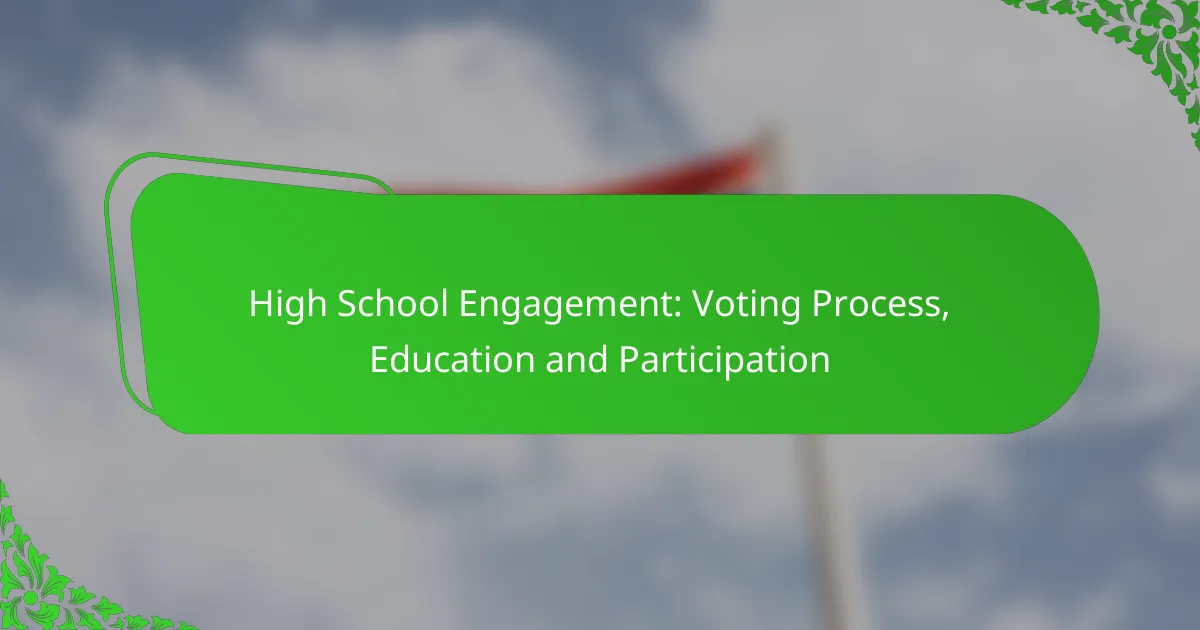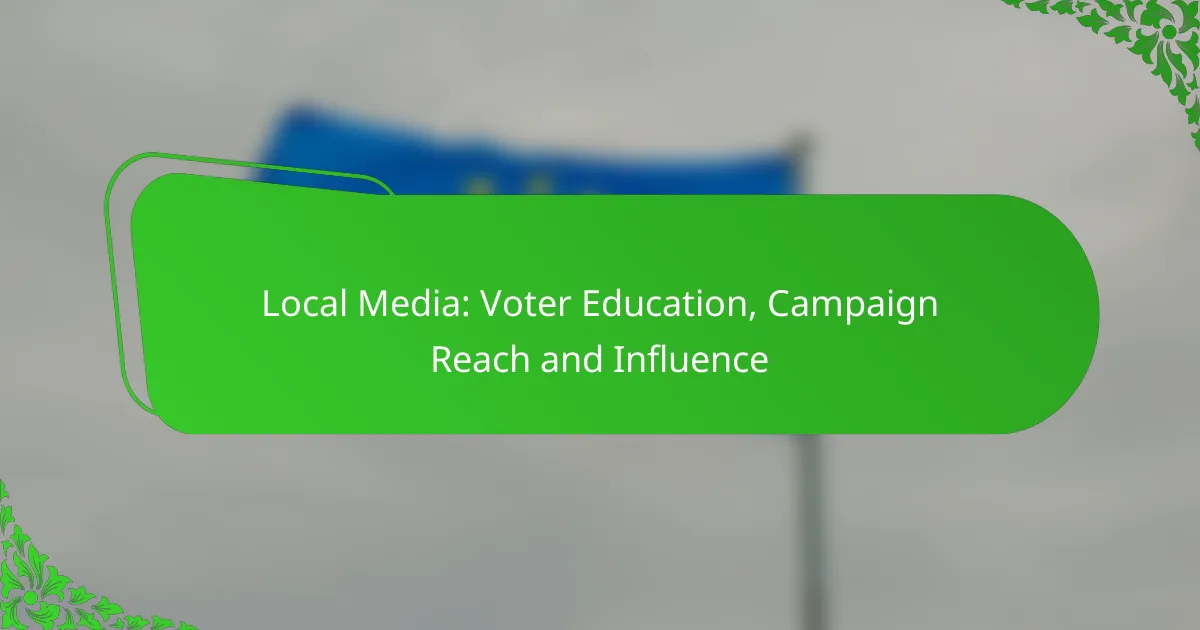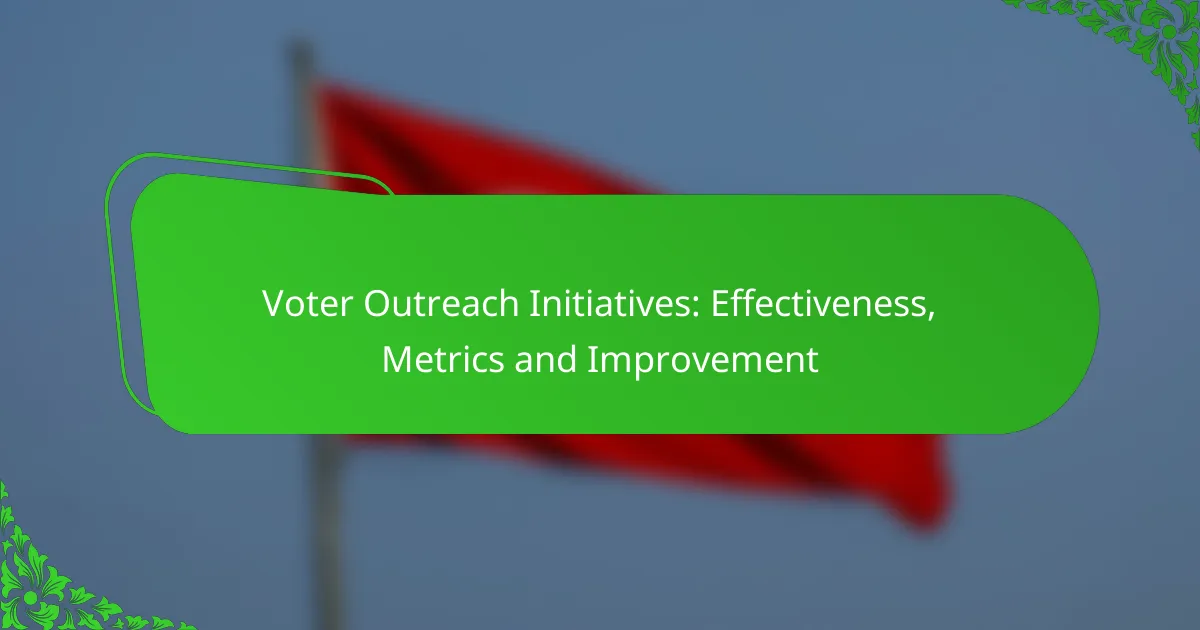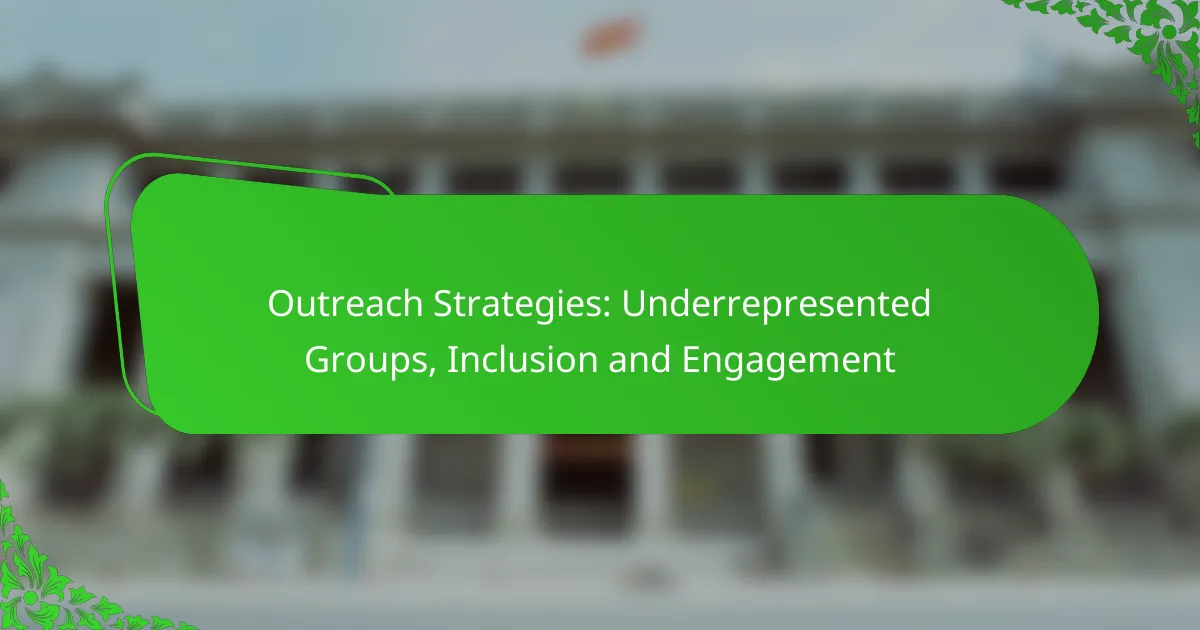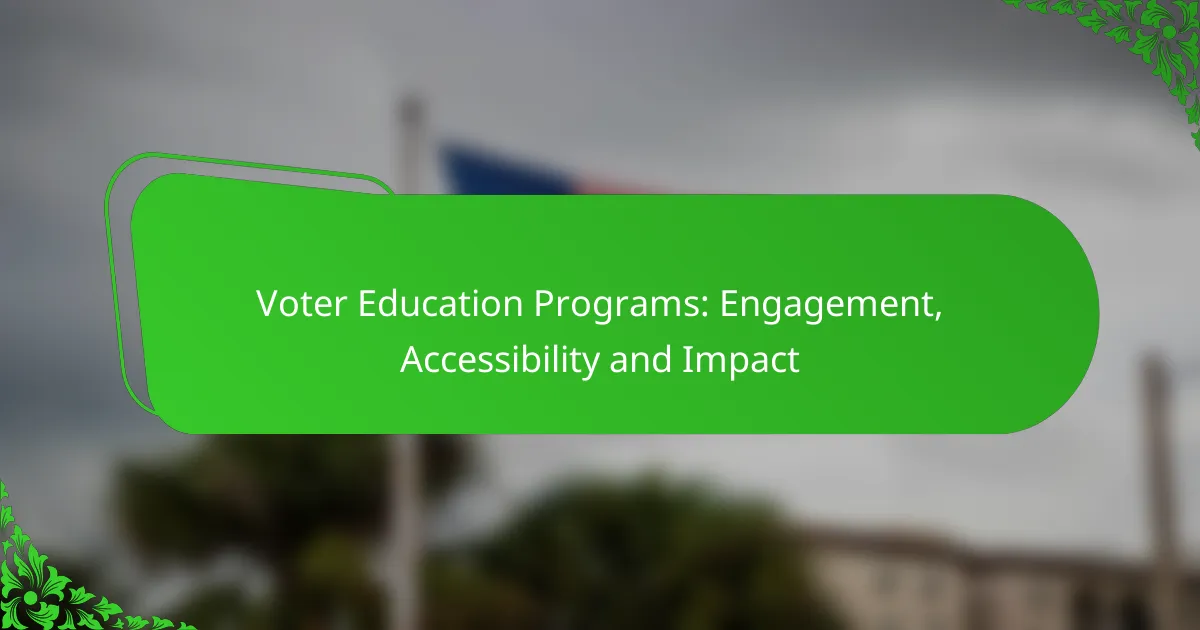High school students play a crucial role in the democratic process by engaging in voting, which empowers them to express their opinions and influence their communities. Through educational resources, they can learn about their voting rights and the importance of civic participation. By registering to vote and understanding the voting methods available to them, students can actively shape their futures and develop a sense of responsibility towards their civic duties.
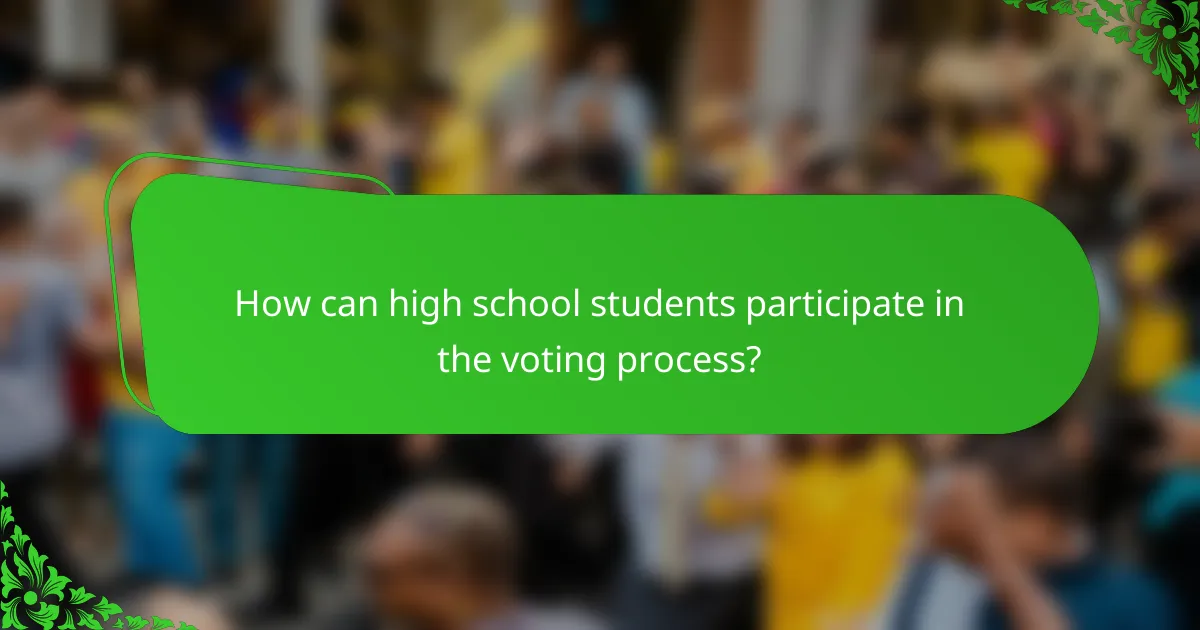
How can high school students participate in the voting process?
High school students can participate in the voting process by registering to vote, understanding their voting methods, and engaging in local initiatives that promote youth voting. These steps empower them to make their voices heard in elections.
Registration requirements for students
To register to vote, high school students typically need to be at least 18 years old by election day and a resident of the state where they plan to vote. Many states allow students to pre-register at 16 or 17, enabling them to be automatically registered when they reach voting age.
Students should check their state’s specific registration requirements, as they can vary. Some states may require identification or proof of residency, while others have more lenient rules.
Voting methods available for students
High school students can vote in person on election day, during early voting periods, or by mail through absentee ballots. In-person voting often requires students to locate their designated polling place, which can be found on state election websites.
Mail-in voting is a convenient option for students who may be away at college or unable to vote in person. They should request their absentee ballot ahead of time and ensure it is returned by the deadline specified by their state.
Local initiatives promoting youth voting
Many communities have initiatives aimed at increasing youth voter participation. These can include educational programs in schools, voter registration drives, and partnerships with local organizations to engage students in the electoral process.
Students can look for events such as mock elections or informational sessions that help demystify the voting process. Engaging with local advocacy groups can also provide opportunities for students to learn about issues that matter to them and how to influence change through voting.
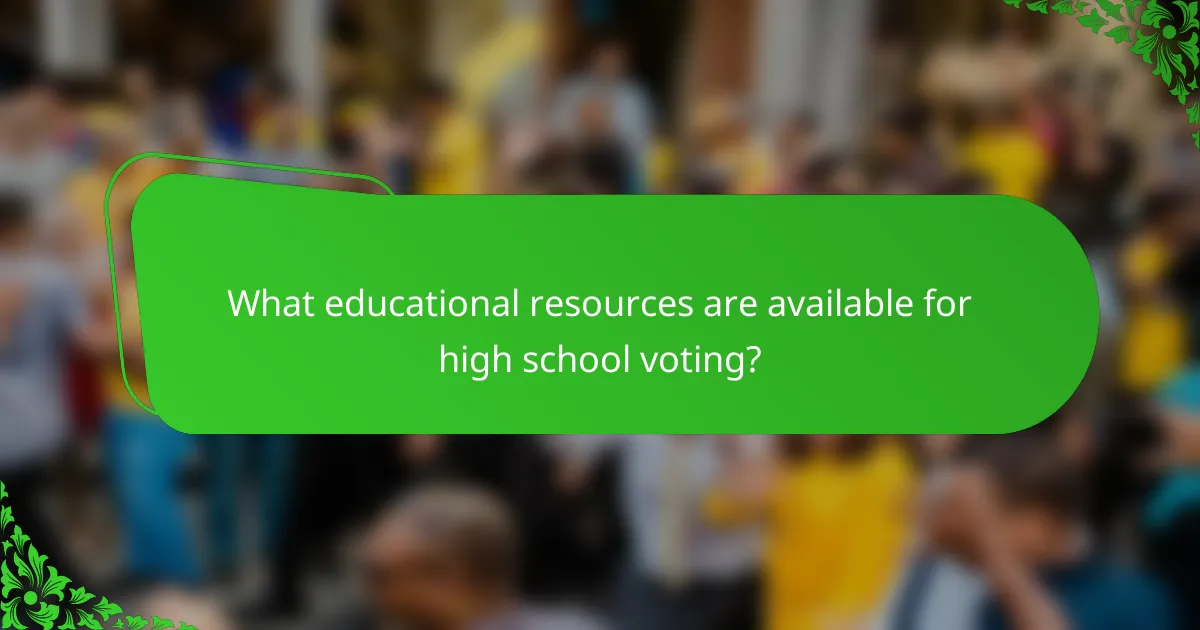
What educational resources are available for high school voting?
High school students have access to various educational resources that facilitate understanding the voting process. These resources aim to inform students about their rights, the importance of civic engagement, and how to participate effectively in elections.
Online platforms for voter education
Numerous online platforms provide comprehensive voter education tailored for high school students. Websites like nass.org and vote.org offer interactive tools, quizzes, and detailed information on registration, polling locations, and voting procedures. These platforms can be accessed anytime, making them convenient for students to learn at their own pace.
Additionally, many platforms feature engaging videos and infographics that simplify complex topics related to voting rights and responsibilities. Students can explore these resources to gain a clearer understanding of the electoral process.
Workshops and seminars in schools
Schools often host workshops and seminars focused on the voting process to engage students directly. These events typically cover topics such as how to register to vote, understanding ballots, and the significance of participating in elections. Inviting local election officials or civic educators can enhance the learning experience by providing firsthand insights.
Participating in these workshops allows students to ask questions and clarify any uncertainties they may have about voting. Schools can also encourage student-led initiatives to promote peer education, fostering a culture of civic responsibility.
Partnerships with civic organizations
Many high schools collaborate with civic organizations to enhance voter education efforts. These partnerships can lead to programs that provide resources, training, and support for students. Organizations like the League of Women Voters often conduct outreach programs that include voter registration drives and educational sessions.
Such collaborations not only enrich the educational experience but also help students connect with community leaders and activists. Engaging with civic organizations can empower students to take an active role in their communities and understand the broader implications of their voting choices.
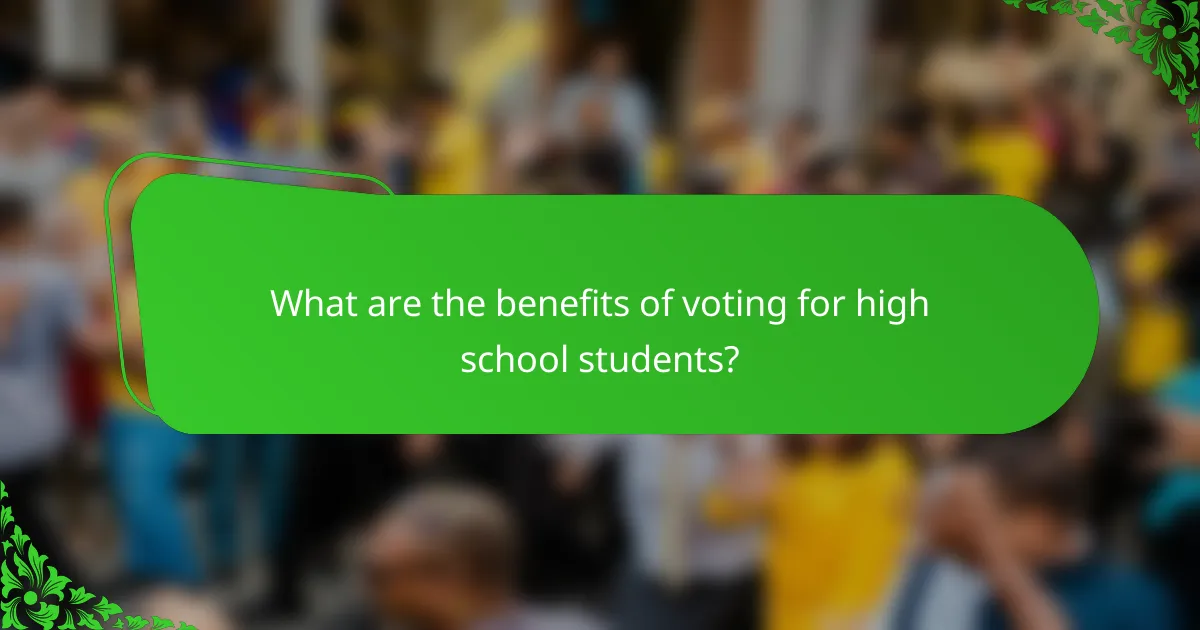
What are the benefits of voting for high school students?
Voting offers high school students a chance to actively participate in democracy, shaping their communities and futures. Engaging in the voting process fosters a sense of responsibility and awareness about civic duties.
Empowerment through civic engagement
Voting empowers high school students by giving them a voice in decisions that affect their lives. When students engage in civic activities, they develop a stronger sense of community and belonging.
Participating in elections can also boost students’ confidence, as they see their opinions reflected in the outcomes. This empowerment encourages them to advocate for issues they care about, making them more informed citizens.
Influence on local policies
High school students can significantly influence local policies through their votes. Local elections often have a direct impact on schools, public safety, and community resources, making student participation crucial.
For instance, voting on school board candidates can lead to changes in educational programs or funding. By participating, students can help ensure that their needs and perspectives are considered in local governance.
Building lifelong voting habits
Engaging in the voting process during high school helps students develop lifelong voting habits. When students vote early, they are more likely to continue participating in elections as adults.
To encourage this habit, schools can provide resources and education about the voting process, including registration and polling locations. Establishing a routine around voting can lead to higher participation rates in future elections.
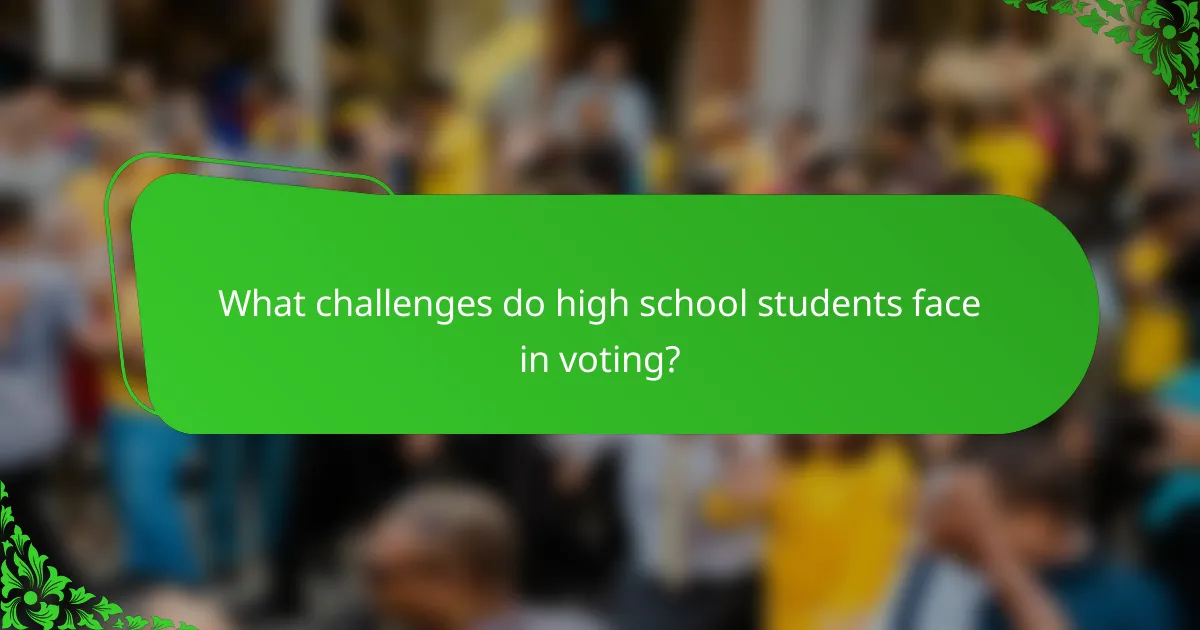
What challenges do high school students face in voting?
High school students encounter several challenges when it comes to voting, including barriers to registration, access to polling places, and understanding the voting process. These obstacles can discourage young voters from participating in elections, impacting their civic engagement.
Barriers to registration
One significant barrier for high school students is the registration process itself. Many states require individuals to be at least 18 years old to vote, which can lead to confusion for those who are close to that age. Additionally, students may not be aware of the registration deadlines or the specific requirements in their state.
To overcome these barriers, schools can provide resources and information about how to register, including online options where available. Encouraging students to register during school events or voter registration drives can also help increase participation.
Access to polling places
Access to polling places can be a challenge for high school students, particularly if they rely on public transportation or do not have a means of getting to the polls. In some areas, polling locations may be far from schools or neighborhoods, making it difficult for students to vote on Election Day.
To improve access, local governments can consider establishing polling places closer to schools or providing transportation options for students. Early voting and mail-in ballots can also offer alternative ways for students to cast their votes without the logistical challenges of traveling to a polling site.
Understanding the voting process
Many high school students lack a clear understanding of the voting process, including how to fill out a ballot and the importance of their vote. This lack of knowledge can lead to anxiety or reluctance to participate in elections.
Educational programs that focus on the voting process, including mock elections and discussions about the impact of voting, can help demystify the experience. Schools should aim to incorporate civic education into their curricula to ensure students feel informed and empowered to vote when the time comes.
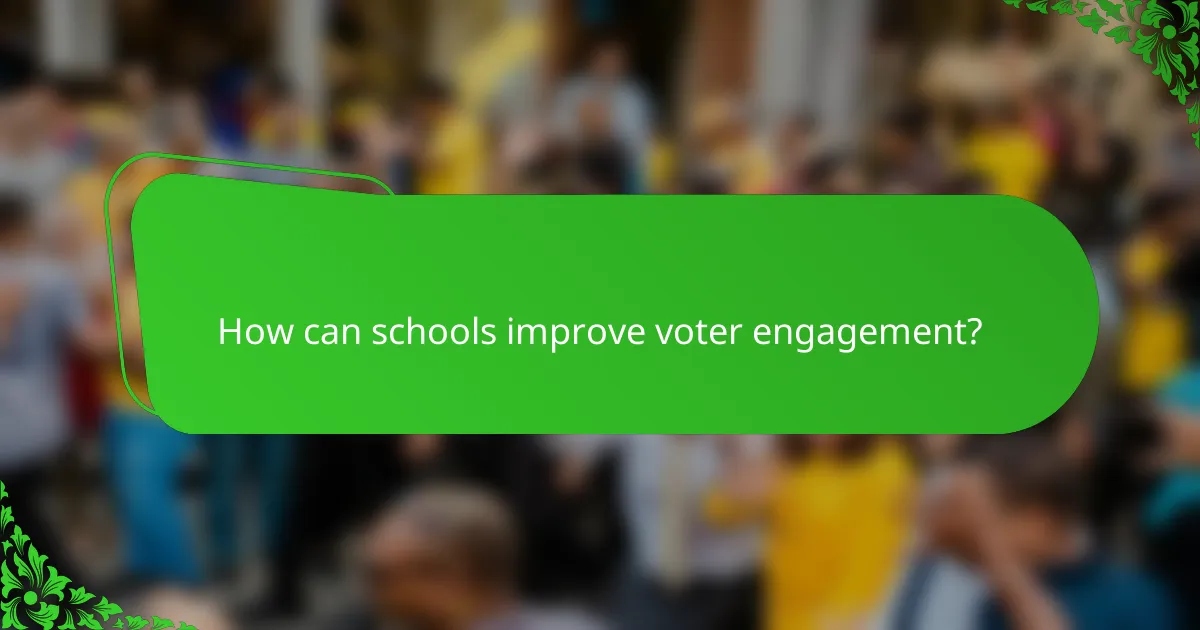
How can schools improve voter engagement?
Schools can enhance voter engagement by integrating voting education into their programs, fostering student-led initiatives, and collaborating with local government. These strategies create a supportive environment that encourages students to understand and participate in the voting process.
Integrating voting into the curriculum
Incorporating voting education into the curriculum helps students grasp the importance of civic participation. Schools can include lessons on the electoral process, the significance of voting, and the impact of local and national elections.
Practical activities, such as mock elections or debates, can provide hands-on experience. This approach not only informs students but also makes the concept of voting more relatable and engaging.
Encouraging student-led initiatives
Empowering students to lead initiatives can significantly boost voter engagement. Schools can support student organizations that focus on voter registration drives, awareness campaigns, and discussions about current political issues.
Encouraging peer-to-peer education allows students to share their insights and experiences, fostering a culture of participation. Schools might consider providing resources and mentorship to help students organize these initiatives effectively.
Collaboration with local government
Partnering with local government can enhance voter engagement efforts in schools. Schools can invite local officials to speak about the voting process, share information on upcoming elections, and explain the importance of civic duty.
Additionally, schools can facilitate voter registration events in collaboration with local agencies. This not only simplifies the registration process for students but also strengthens community ties and emphasizes the role of local governance in civic engagement.
